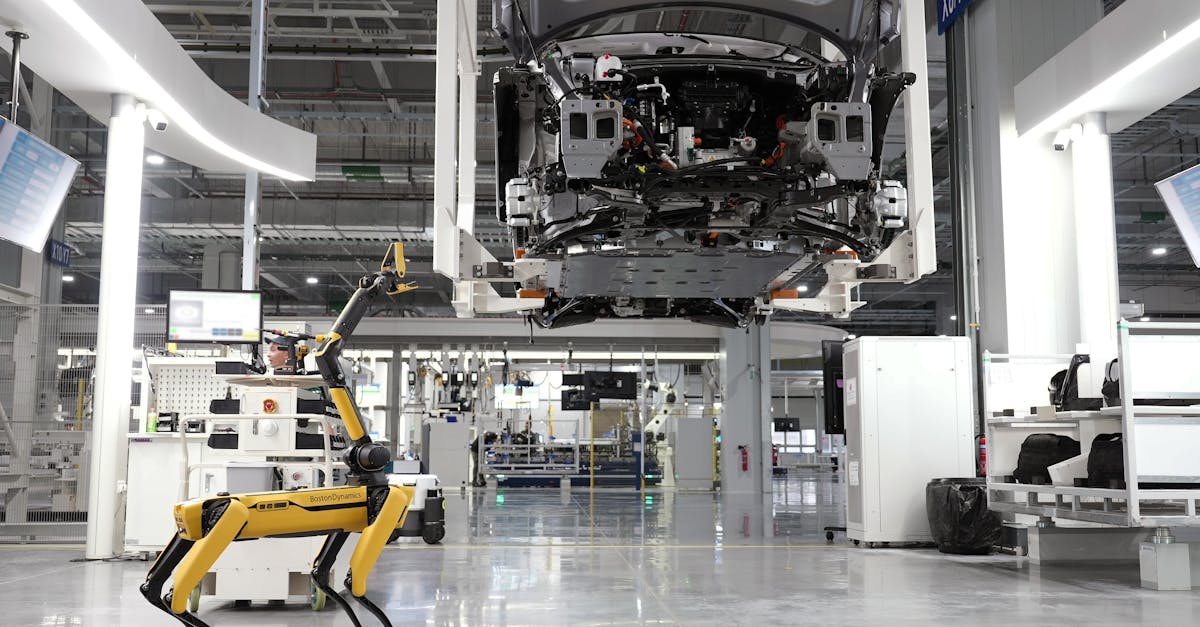The automotive industry is revving up like never before, and it’s all thanks to the Internet of Things (IoT). Imagine a world where your car knows when it’s time for an oil change before you do, or where traffic jams become a thing of the past because your vehicle communicates with others on the road. Sounds like science fiction? It’s happening right now, and it’s transforming the way people drive.
Table of Contents
ToggleOverview of IoT in Automotive Industry
The Internet of Things (IoT) fundamentally transforms the automotive industry. Enhanced connectivity enables vehicles to interact with each other and their environment. Real-time data collection facilitates improved maintenance schedules, ensuring optimal vehicle performance.
Data-driven insights contribute to better fuel efficiency and lower emissions, vital for sustainability. Implementing IoT technologies allows for advanced driver-assistance systems (ADAS), increasing safety on the roads. Sensors in vehicles monitor performance metrics and alert drivers to potential issues before they escalate.
Integrating IoT with navigation systems leads to improved traffic management. Vehicles can receive updates about road conditions and potential delays, allowing for smarter route planning. Additionally, smart parking solutions help drivers find available spaces effortlessly, reducing congestion and saving time.
Fleet management benefits significantly from IoT applications. Real-time tracking allows companies to monitor vehicle locations, optimize routes, and reduce operational costs. This technology enhances customer service through timely deliveries and transparent communication.
Cost savings arise from predictive maintenance as well. Automakers leverage IoT data to analyze vehicle conditions, performing maintenance only when necessary. This capability minimizes unplanned downtime and extends the lifespan of vehicles.
The future of the automotive industry is closely tied to advancements in IoT. Innovations like connected vehicles and smart infrastructure will reshape how people interact with transportation. As these technologies evolve, the driving experience will continue to improve, making travel safer and more efficient.
Key Technologies Driving IoT
IoT in the automotive sector relies on several key technologies that enhance vehicle capabilities and user experience. These advancements include sensor integration and connectivity solutions, which together facilitate communication and data exchange.
Sensor Integration
Sensors play a vital role in IoT applications within vehicles. They gather data related to speed, location, engine performance, and environmental conditions. Vehicles equipped with multiple sensors can process real-time information, allowing for immediate adjustments, such as optimizing fuel usage during driving. Data from sensors also supports predictive maintenance, ensuring that vehicles remain reliable and efficient. By integrating various sensors, manufacturers improve vehicle safety features and driver comfort, thereby enhancing the overall driving experience.
Connectivity Solutions
Connectivity solutions form the backbone of IoT in the automotive industry. Technologies such as 5G and vehicle-to-everything (V2X) communication enable seamless interactions between cars, infrastructure, and other devices. With these solutions, vehicles can receive real-time traffic updates, allowing for smarter route planning. Enhanced connectivity also fosters fleet management capabilities, enabling companies to monitor vehicles and optimize operations more effectively. Such solutions contribute to reduced congestion and improved safety on the roads, solidifying their role in the future of transportation.
Applications of IoT in Automotive Industry
IoT technologies significantly enhance various aspects of the automotive industry. Key applications include fleet management, predictive maintenance, and enhanced safety features.
Fleet Management
Real-time tracking systems enable companies to know vehicle locations immediately. Companies can optimize routes based on traffic conditions, reducing fuel consumption. Efficient fleet management improves customer service by ensuring timely deliveries. Analyzing data from connected vehicles reveals usage patterns, enhancing overall operational efficiency. Cost savings from these optimizations contribute to a more sustainable business model.
Predictive Maintenance
Vehicle health monitoring through IoT sensors provides insights into performance metrics. Data analytics helps determine when maintenance is genuinely necessary, thus preventing unexpected failures. Automakers can address potential issues proactively, minimizing vehicle downtime. This data-driven approach extends vehicle lifespan while enhancing overall reliability. Predictive maintenance contributes significantly to operational efficiency by streamlining service processes.
Enhanced Safety Features
Safety features are greatly enhanced through IoT integration. Advanced driver-assistance systems monitor performance metrics actively, alerting drivers to potential hazards. Real-time data helps drivers make informed decisions, leading to improved road safety. Vehicles equipped with connected technologies can communicate with infrastructure to avoid accidents. This focus on safety creates a secure driving environment, ultimately benefiting all road users.
Challenges and Concerns
The adoption of IoT in the automotive industry comes with various challenges that must be addressed.
Data Security Issues
Data security poses a significant challenge for IoT in vehicles. Hackers can exploit vulnerabilities in connected systems, leading to potential breaches of sensitive information. Protecting user data, including location and personal preferences, requires robust security measures. Encryption techniques and secure communication protocols help safeguard information during transmission. Companies must prioritize developing strong cybersecurity infrastructures to mitigate risks effectively. Regulatory compliance plays an essential role in maintaining data privacy standards and fostering consumer trust.
Integration with Legacy Systems
Integrating IoT technologies with legacy automotive systems creates complexities. Older vehicles often lack the necessary infrastructure to support advanced connectivity features. Consequently, retrofitting may demand substantial investment and redesign efforts. Compatibility issues can also arise, hindering seamless communication between new and existing components. Automakers must create strategic plans for gradual integration, ensuring a smooth transition without compromising vehicle performance. Collaborative efforts between technology providers and manufacturers enhance system integration and development timelines.
Future Trends in IoT for Automotive
The automotive industry is poised to undergo transformative changes through IoT innovations. These trends include the emergence of autonomous vehicles and the development of smart infrastructure.
Autonomous Vehicles
Autonomous vehicles leverage IoT technologies to enhance driving experiences. Sensors continuously gather data on the vehicle’s surroundings, enabling navigation and safety features. Data from other vehicles and infrastructure improves situational awareness, allowing for real-time adjustments to driving strategies. This technology supports features like lane-keeping assistance and adaptive cruise control, enhancing overall safety. Companies developing autonomous vehicles must prioritize robust data security to prevent unauthorized access and ensure passenger safety. Industry experts predict that widespread adoption of these vehicles could significantly reduce traffic accidents caused by human error, making roads safer for everyone.
Smart Infrastructure
Smart infrastructure complements IoT advancements in vehicles, enhancing overall traffic management. Integrated systems allow traffic lights to communicate with cars, optimizing signal timings based on real-time traffic conditions. This helps decrease congestion and improve travel times for commuters. Additionally, connected parking solutions direct drivers to available spaces, further streamlining the driving experience. IoT-enabled infrastructure can collect valuable data on traffic patterns, enabling municipalities to make informed decisions about road improvements. With ongoing investments in smart infrastructure, cities aim to improve overall vehicular efficiency and environmental sustainability. This focus on connected ecosystems ultimately supports a more integrated transportation network.
Conclusion
The integration of IoT in the automotive industry is not just a trend; it’s a transformative force reshaping how vehicles operate and interact. Enhanced connectivity and real-time data collection are paving the way for smarter, safer, and more efficient driving experiences.
As automakers embrace these technologies, the potential for improved maintenance, safety features, and fleet management becomes increasingly evident. While challenges like data security and system integration remain, the ongoing advancements signal a promising future.
The automotive landscape is evolving rapidly, and IoT is at the forefront of this change, driving innovations that will redefine transportation for years to come.



